
Location: Cranbourne, VIC
Established: 1954
Architect: Sam Berriman (1954)/ OCCM (2018)
First Played: 18th Dec 2016
Last Played: 12th Feb 2021
Magazine Ratings

79 (Current)

62 (Current)
With only three courses remaining in my home state of Victoria to complete the Australian Golf Top 100, it was time to visit Cranbourne Golf Club. Located southwest of Melbourne, a friend Kirsten had assisted in organising a tee time.
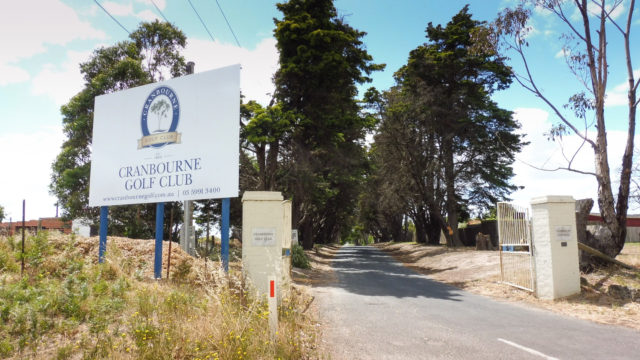
Cranbourne Golf Club Entrance
The entrance is off a main road, not looking overly spectacular. There is quite a long road, running along housing, before actually reaching the clubhouse.
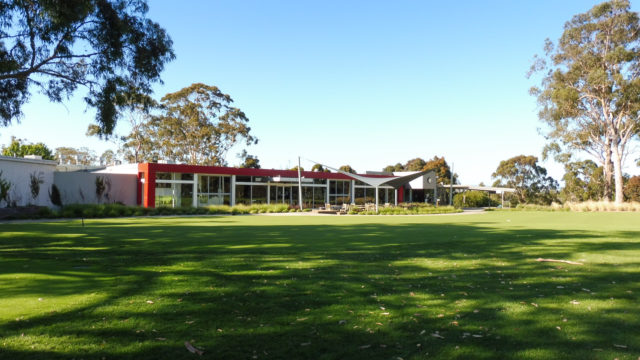
Clubhouse at Cranbourne Golf Club
Cranbourne golf club was established by members of the Jewish community, after facing discrimination at quite a few other Victorian clubs. Three years after having the idea to start the club, a course was opened in 1954.
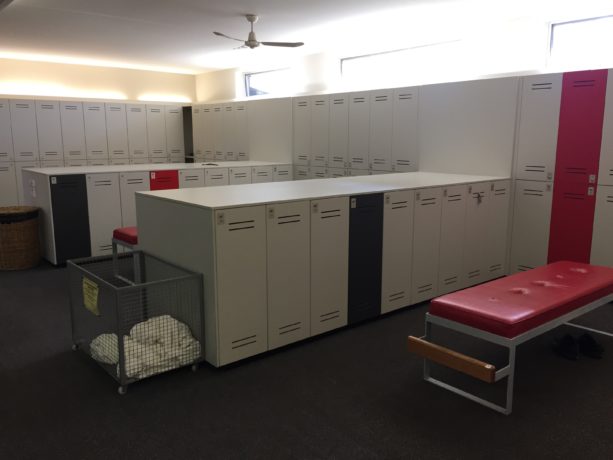
Changerooms at Cranbourne Golf Club
The locker room interesting is colour co-ordinated with the outside of the clubhouse.
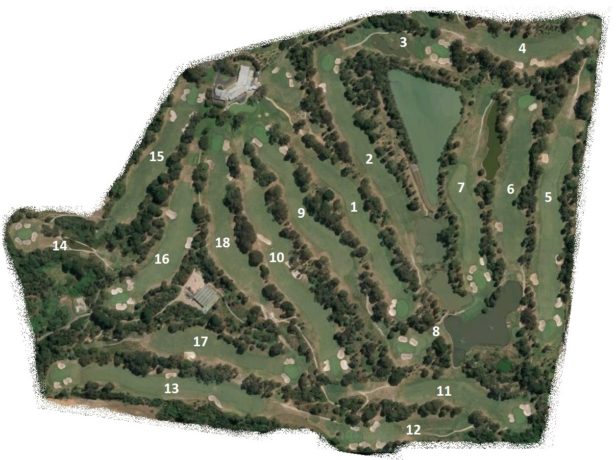
Cranbourne Golf Club Course Map
The course has two very distinctive nines. On the front nine I would classify as very parkland feel, where as the back nine feels like a typical sandbelt course.
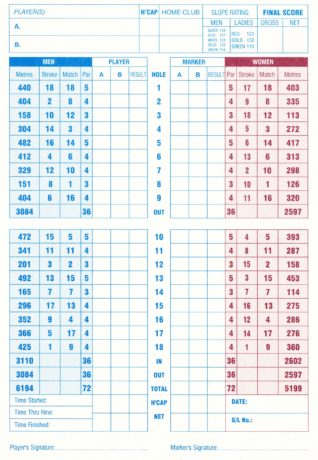
Scorecard for Cranbourne Golf Club
On our day of play, we actually started on the 10th tee, so if it looks like the sun is going getting lower by the ninth, you are not imagining things.
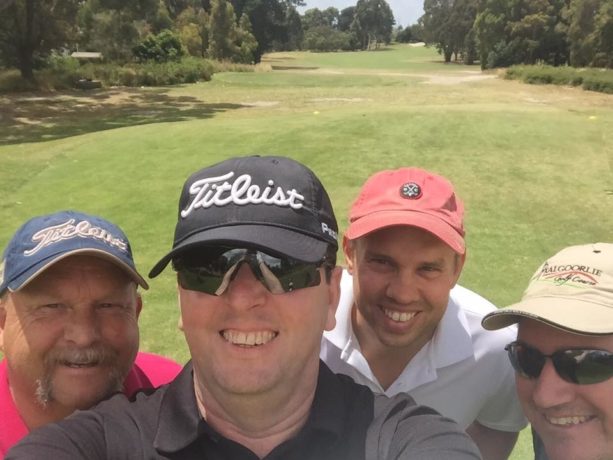
The Playing Group – Mark, James, Stephen & myself
We had lined up a foursome for this visit. Regular playing partner James, Mark who I had played Port Fairy on a previous visit and Steve, a fellow top 100 enthusiast. Although his vision is for the Top 100 in the World, but also some of Australia’s great courses. We had corresponded quite a bit online so it was great to finally meet.
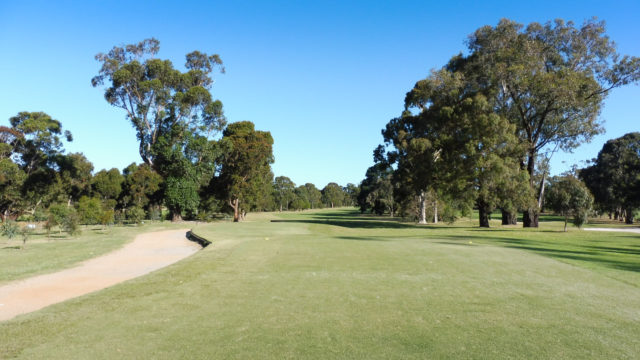
Hole 1 – 440 meter par 5
To start the round is the shortest par 5 and easiest hole on the course. With a slight dogleg to the right, trees are the main hazard, running down either side. Longers hitters may run out of fairway if too far left, as the fairway narrows for the second portion of the hole.
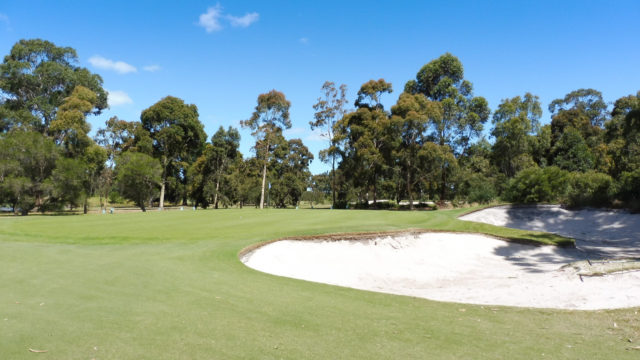
Bunker beside the 1st green
Playing up a small incline towards the green, most of the left portion is very open, with one solitary bunker built in the small mound to the right. The putting surface angles away to the right and sits slightly raised above the surrounds. A fairly sedate hole to start the round, being relatively flat, but one which eases the player into the round. Even though tree lined down either side of the fairway, it is still fairly forgiving.
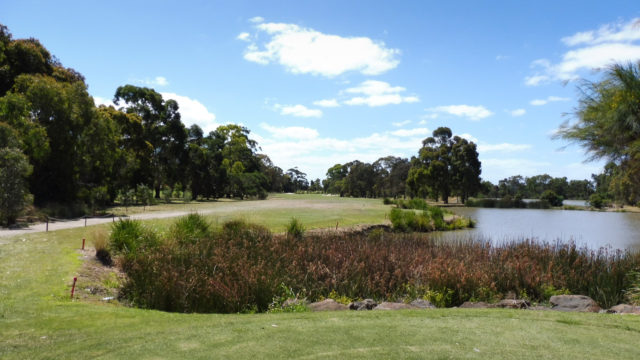
Hole 2 – 404 meter par 4
Next is the second hardest hole at Cranbourne Golf Club, being a long par 4. Playing relatively straight the whole length, the tee shot must carry a small portion of the water hazard, which really shouldn’t cause any issue, although anything off to the right will find water further along the hole.
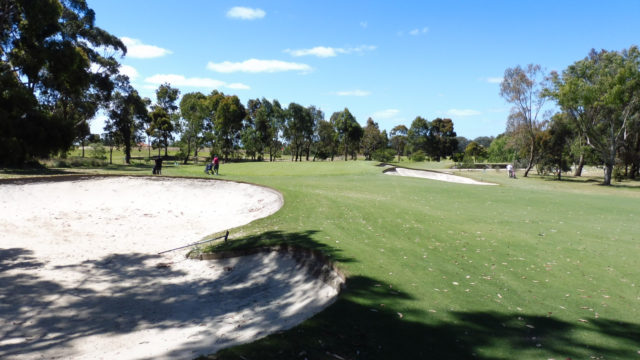
Bunker short of the 2nd green
With a fairway sloping mostly to the right, finding the right of the fairway may leave a more difficult approach due to the tree line. A trap is found short left, which would leave a difficult shot to the green. Cleverly the putting surface has sloping upwards, as it moves away, allowing the bunkers to be slightly deeper at its front, but also protects the green from any shots coming in hot.
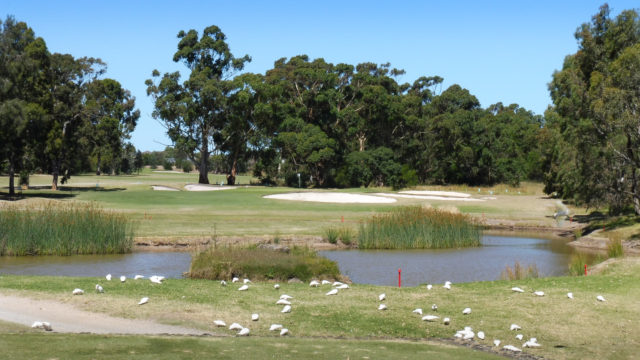
Hole 3 – 158 meter par 3
The easiest par 3 plays from a raised tee over a water hazard. Plenty of room is found between the water and the green, so it more a visual, than a real penalty. But be careful as there is actually two sections of the water, as it snakes around a small island.
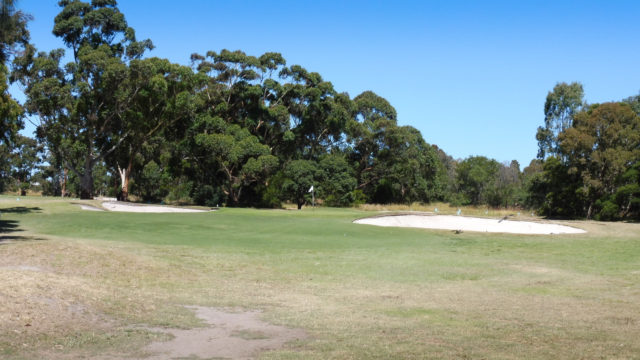
Well bunkered 3rd green
Angling away to the right, the green is protected by three large traps along the right and one at the rear. A section of short grass is found left which is the best place to miss, leaving the full length of the green exposed. Not a bad hole but certainly preferred the shorter ones on the back nine.
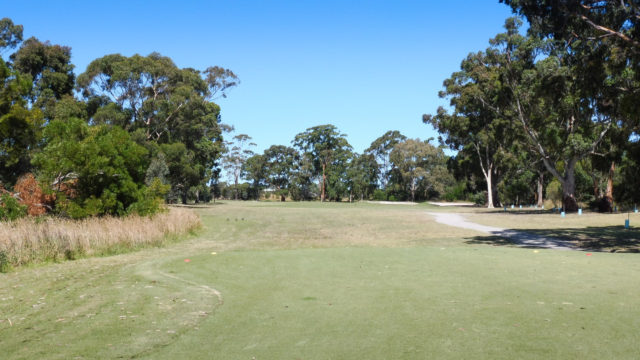
Hole 4 – 304 meter par 4
Coming to a shorter length par 4, this hole dog legs to the left quite sharply. There is ample room down the inside of the turn, although going too far left brings tree trouble.
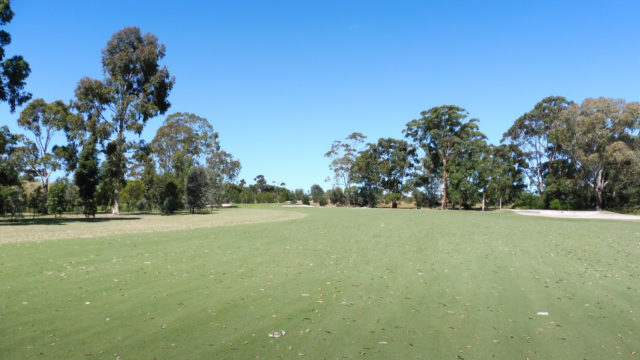
View from the 4th fairway
Two bunkers sit on the outside of the turn and only really come into play for those playing overly safe. Play from the left opens up the green slightly.
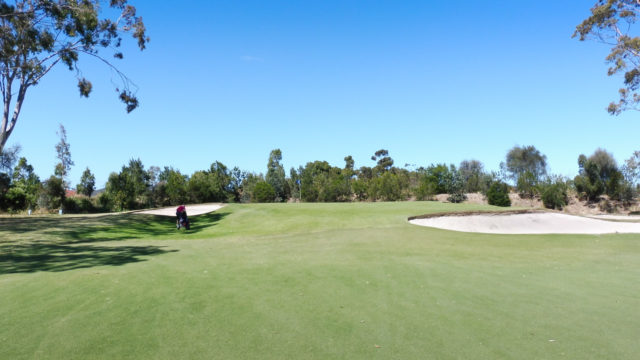
The raised 4th green
Three bunkers are found around this raised green, one at the front, with two others staggered on either side. A large slope away is found front left, so anything short will feed away from the green. Really the only shot available is carrying the trouble to the green. So much could be changed on the hole to improve the design. Fairway bunkers are located on the wrong side and would be much better suited on the inside of the turn. Safety from the nearby road has been taken into consideration, but this hole would be a lot better with a few changes.
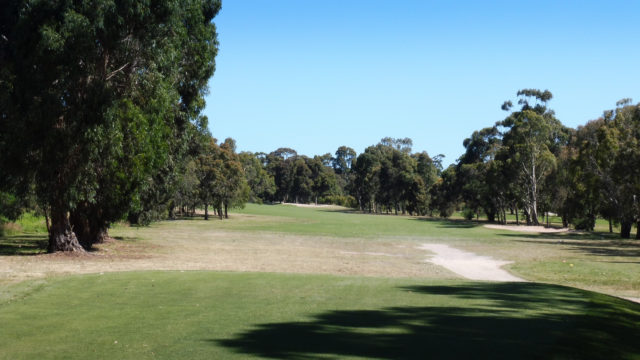
Hole 5 – 482 meter par 5
Heading south from the most northern point of the course is this longer par 5. Hitting down a gentle slope, play is along the eastern boundary, but the hole ensures the tee shot is played slightly away to the right, with the ground sloping in the same direction. From the tee play is down a slight decline, before a turn to the left for the second shot plays up a gentle slope.
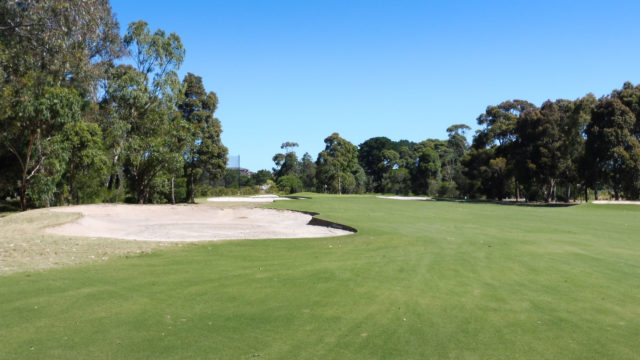
Approach from the 5th fairway
With a decent amount of fairway the length of the hole, trees are present down either side. As we get closer to the green, long flat bunkers are found left. Efforts have been made to make players avoid hitting out of bounds to the left, leaving some clear space on the right section of the fairway.
The putting surface is long and angles slightly away to the right. There is some subtle contours, with small mounds on the left. I didn’t mind the hole, especially with how the club has dealt with the boundary along the hole. It is not really until the green, that it becomes evident, with large netting to the left. It is an easy three shot hole, but longer hitters could reach due to the hill sloping away from the tee.
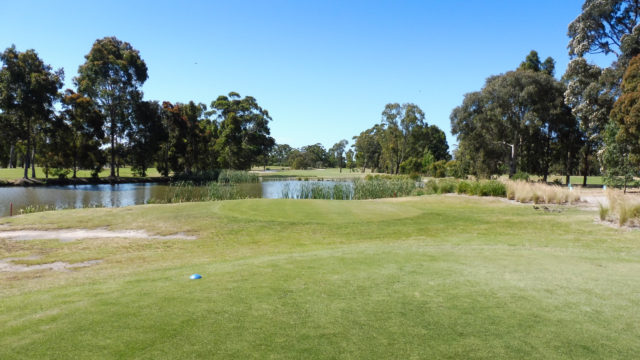
Hole 6 – 412 meter par 4
Heading back in the opposite direction is this long par 4. From the tee, a water hazard must be carried, again more a visual thing, with a carry of around 70 meters. This hole plays with a right turn.
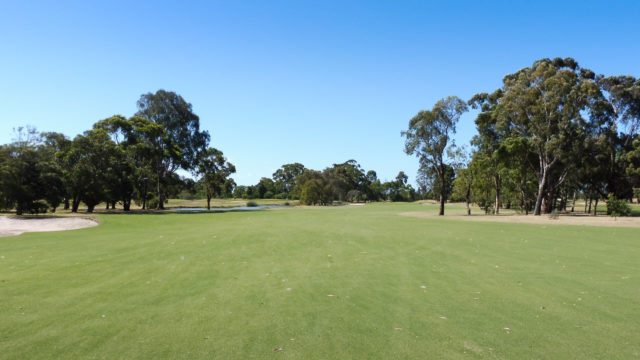
View along the 6th fairway
A bunker located to the left of the fairway, more in play for those taking the clearer line to the green. On the inside of the turn, some sparse trees protrude, which is the ideal side of the fairway for the approach. Finding yourself too far right brings water into play down the left, if playing a more aggressive second shot.
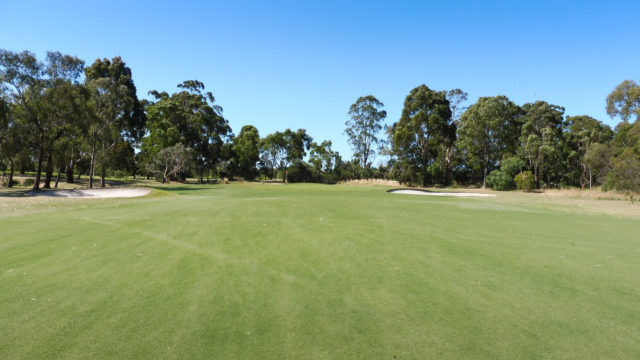
Very open 6th green
The green sits quite open, angling away to the right, with one bunker on the same side. There are some subtle slopes around the green, allowing for a variety of shots. A tough hole due to length, but certainly requires a little bit of strategy from the tee. Quite like the green being fairly open, especially due to the hole length.
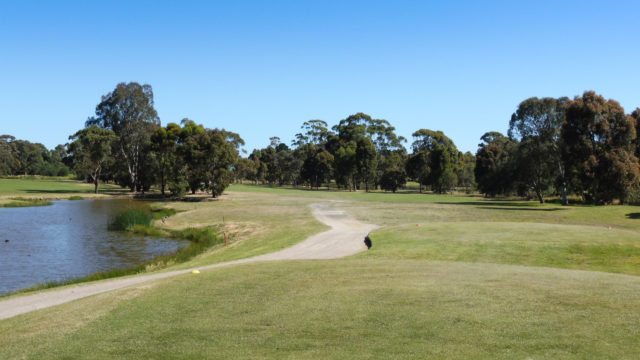
Hole 7 – 329 meter par 4
Another short par 4 plays back in the direction we have just traveled. Playing around the water body, this hole turns to the left. The fairway has been cut narrow, giving some shape, but predominantly runs away on an angle. At the start of the fairway around twenty meters of rough is located to the left, which is the line to take if seeking a short approach. Caution is required though with the tee shot, those playing too long down the right potentially finding another water hazard.
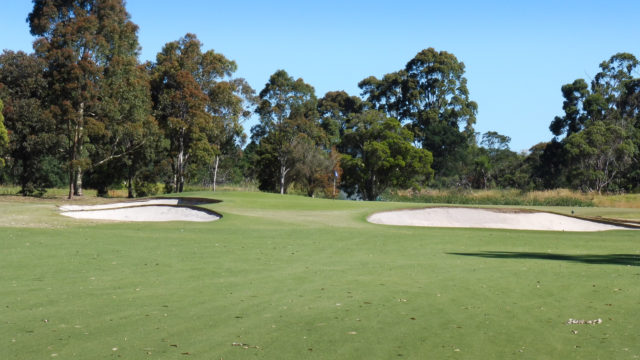
Well bunkered 7th green
This slightly raised green has a lot of bunkers to contend with. One is short to deceive distance, whilst another four are green side, at the front and on either side. Some smaller contours are found on the putting surface, with slight slopes leading away on all sides. An enjoyable hole which can be very simple if played conservatively, but punish those slashing away without any thought.
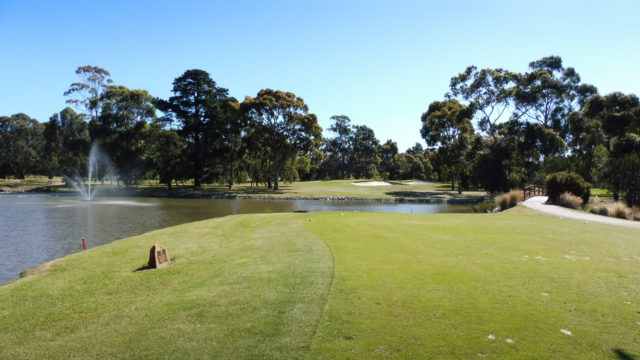
Hole 8 – 151 meter par 3
Working the way back to the clubhouse is the shortest hole on course. Playing over a water hazard, with a fountain in the middle, should not be too big an issue for most players.
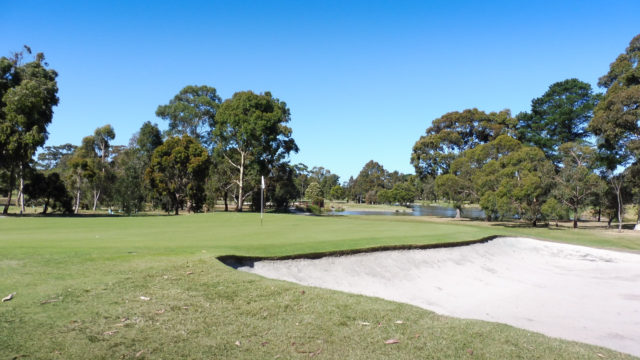
The raised 8th green
Sitting well back from the hazard, the green has some forgiveness, but landing short is not the place to be. Two deep bunkers are found at the front of the green, which can be quite narrow depending on the pin position. It would not be difficult to find yourself going bunker to bunker if this is not a strong part of your game. Similar to the third hole, missing to the left allows the green to open up. I enjoyed this hole more so than the earlier par 3, more due to the green shaping, which demanded a bit more from the player.
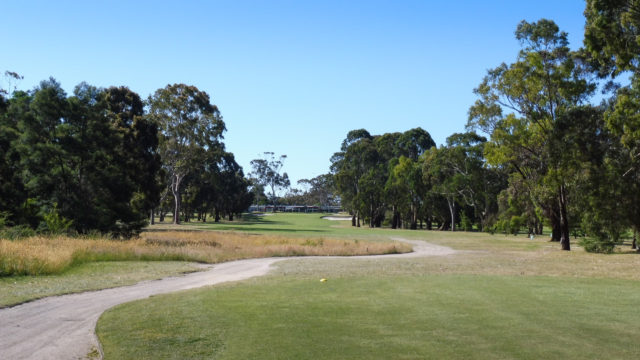
Hole 9 – 404 meter par 4
Finishing the front nine is another long par 4. Relatively straight, a gentle decline, makes this play slightly shorter than the distance suggests. The biggest issue is finding the trees either side, although the far right side of the fairway will leave a tougher approach.
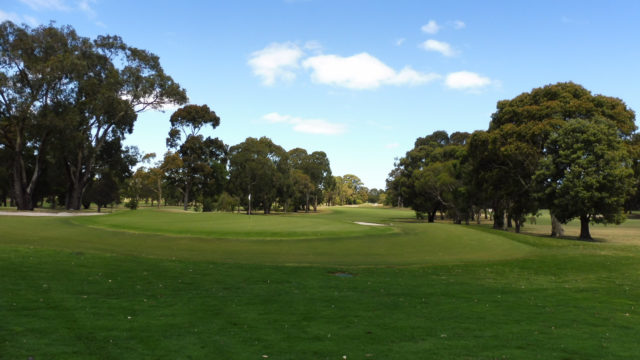
Looking back from the 9th green
Making the second shot, encounters a slight uphill approach to the green. A bunker short right can help deceive the player, but the bunkers either side will be more of a problem. Again, due to the length of the hole, the entry to the putting surface is left open, allowing the ball to be run along the ground. Challenging hole to finish the front, which requires great ball striking to reach the green in two.
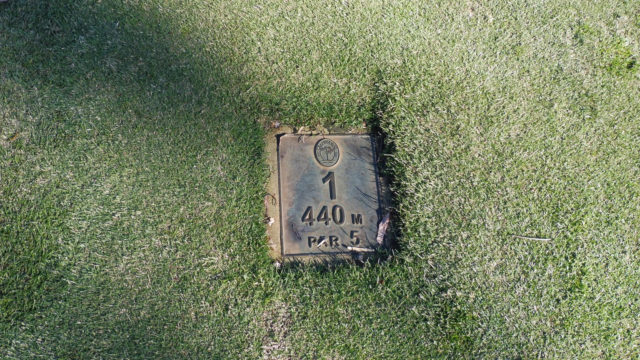
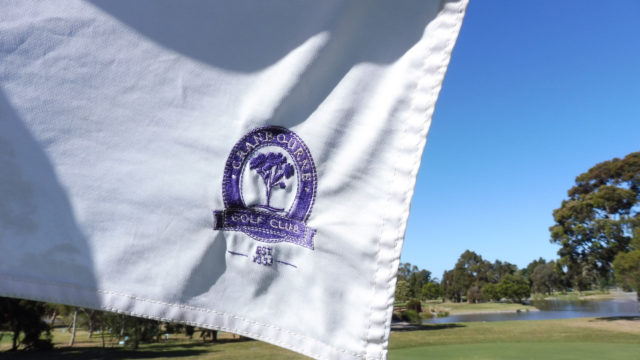
Hole marker and pin flag
Cranbourne Golf Club has you standard style hole plates, helpful if not looking at scorecard. The pin flag has the club emblem, subtly found in the corner.
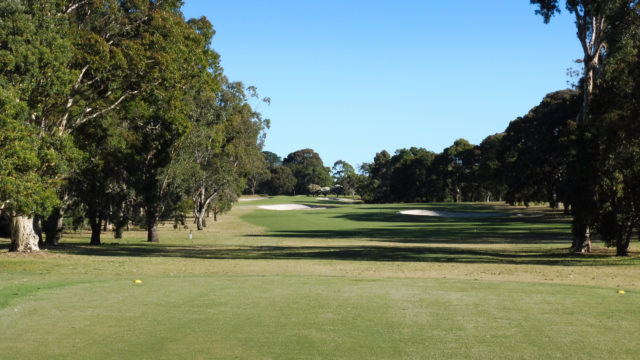
Hole 10 – 472 meter par 5
Starting the back look is a medium length par 5 hole. With a slight turn to the left, the fairway has some slight elevation changes along its way to the green. From the tee a bunker on the right is within reach, but could be carried by longer hitters.
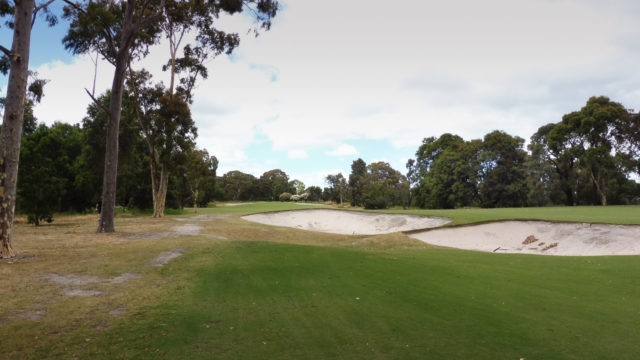
Bunkers along the 10th fairway
Two further traps are found left. For most players these are not in play unless hitting from the forward tees. Down the left side provides a slightly better angle into the green, due to the angle of the green being slightly to the right. The putting surface is longer than it is wide, with three fairly shallow bunkers greenside. Not a bad hole to start the back loop.
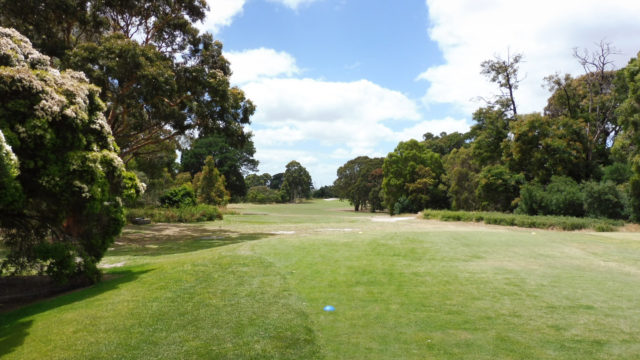
Hole 11 – 341 meter par 4
Next is a medium length par 4 which doglegs to the right. Taking on the trees to the right can shorten the hole, but straying to far left may find water or trees, leaving a difficult shot into the green.
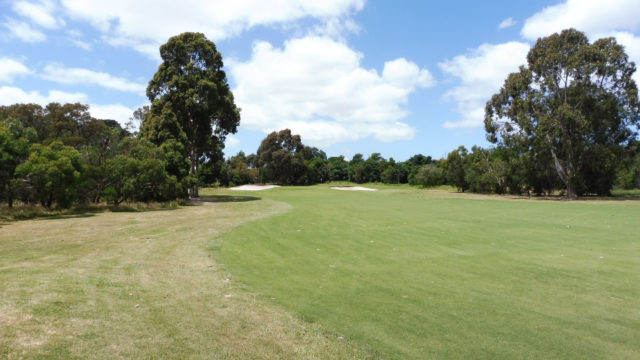
View from the 11th fairway
Personally feel the further left you find yourself on the fairway, the better the angle into the green.
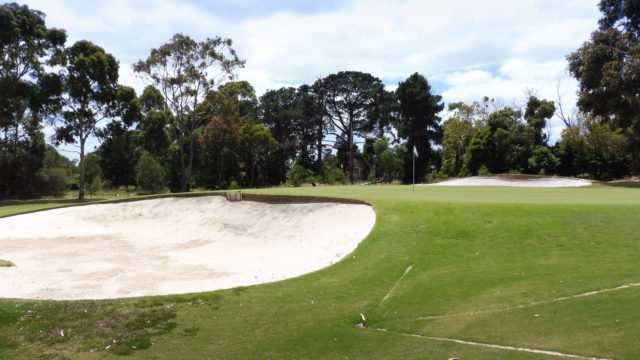
Raised 11th green
Sitting slightly raised, the front will repel any ball slightly short. Bunkers are located front and rear, to a green which is wider than it is deep. Considering the angle of the green, there is no real sense taking on the corner too much, as it will ensure the front bunker has to be carried into the green. Maybe a shorter shot but is it really worth the risk.
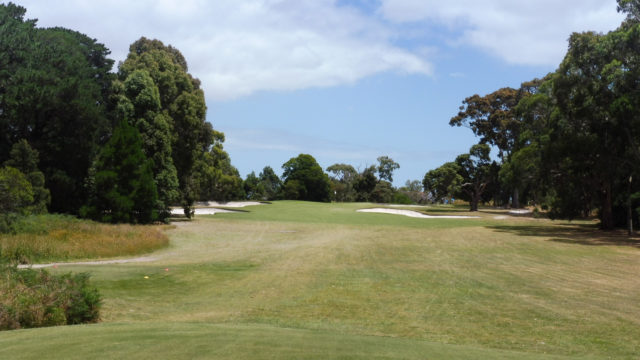
Hole 12 – 201 meter par 3
The first short hole on the back nine, is not so short. Being the longest and hardest par 3 at Cranbourne Golf Club, this is a tough hole. To make this more difficult it plays uphill as well. On our day of play a head wind was also encountered, making this a beast. Two bunkers are short either side of the shorter grass leading into the hole, although the right hand side if more in play, encroaching across the greens slightly.
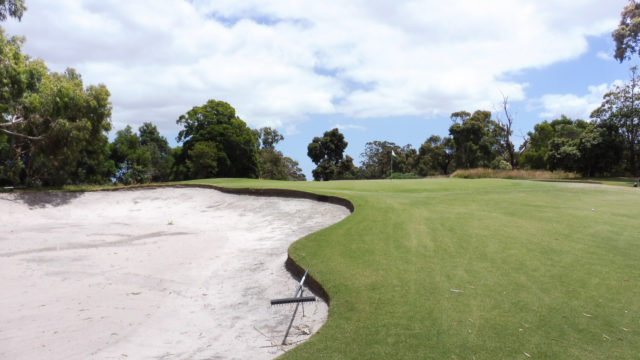
Bunkering near the 12th green
Three bunkers are located around the green, which widens towards the rear. Sloping of the putting surface is mainly rear to front, in line with the natural surroundings. I was happy to see a wide entrance to this due to such a long shot being required to reach the target. The bunker short right either has to be carried or circumvented to reach the putting surface, being the main obstacle leading in. Certainly one of the tougher holes on the course and deserving of its index ranking 3.
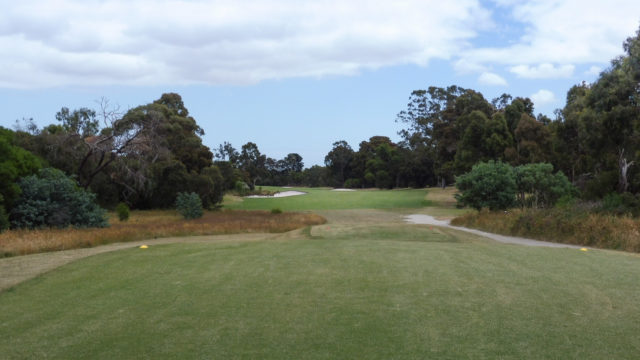
Hole 13 – 492 meter par 5
After playing the hardest short hole, come the longest hole on course, as well as being the hardest index par 5. Turning gradually left over the length of the hole, position will be key with every shot. The fairway is wide and receptive, but offers some risk with fairway bunkers well placed. From the tee one large trap is located left, playing close to this shortens the hole and allows an easier second shot.
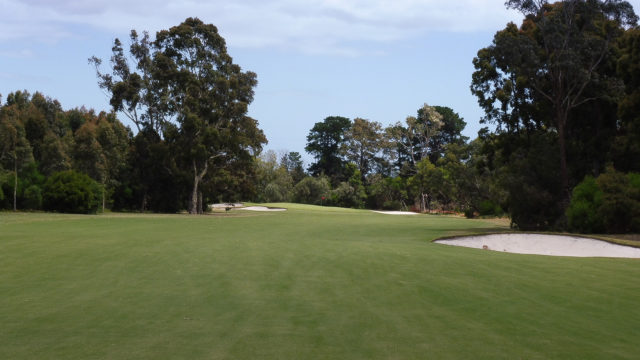
Approach from the 13th fairway
Landing the second in the right area is key to having an ideal line into the green. A lone bunker sits right of the fairway. Landing near this opens up the green for a variety of shots. Finding yourself out to the left, brings a large tree into play and restricting access to the back portion of the green.
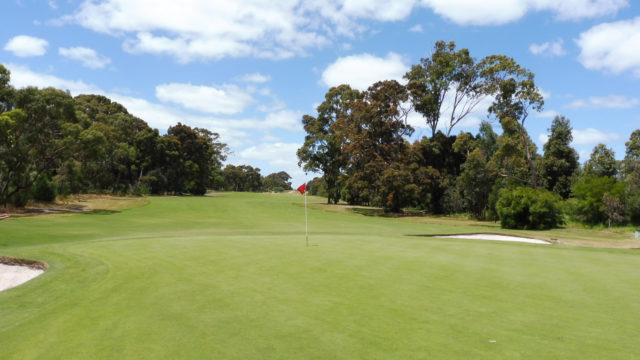
Looking back from the 13th green
Bunkers are located either side of the green, whilst a swale is found at front right, feeding away any ball not finding the correct distance. Stand out par 5 for the course. Loved that there was strategy to be considered with each shot. Take on the risk and the reward, a better line would to the target.
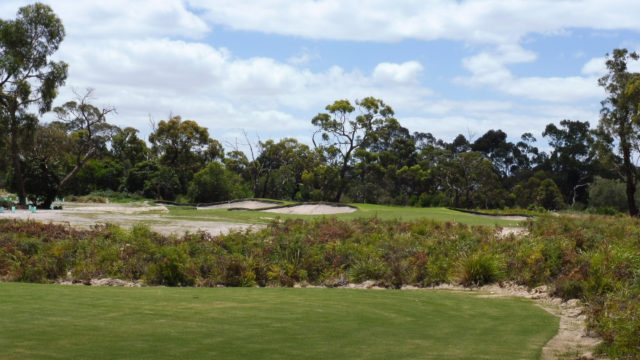
New 14th tee
Not in play during our visit was the 14th hole. Only a short hole, from the tee carry a small section of natural shrubs, before finding a well protected green.
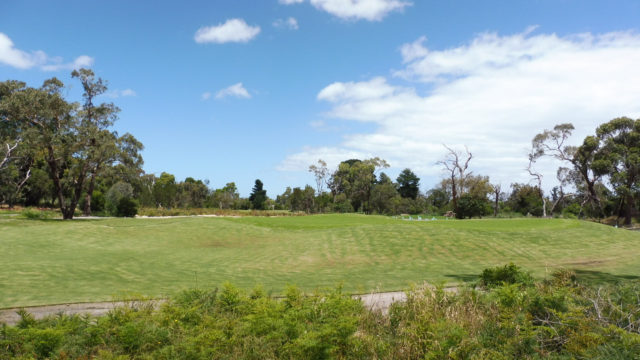
A new 14th green
The green sits raised above the surrounds, leading to slopes running away in most directions. Three bunkers are located green side, two to the front-left and another on the right. Seeming to angle away to the left, it was hard to get a true feel for how the green would play. Look forward to returning one day to see the final result.
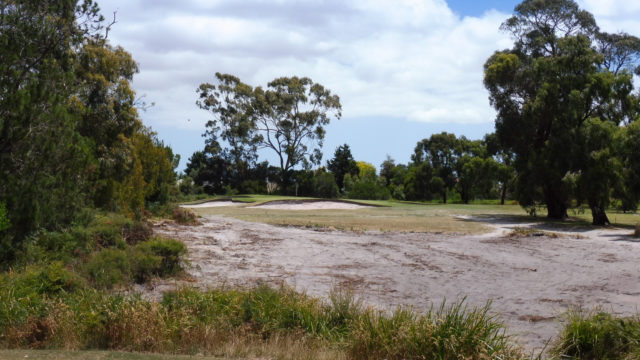
Hole 14 – 165 meter par 3
During our visit the hole played from a temporary tee, at 114 meters. Having to carry some sandy baron area before reaching a green almost surrounded by bunkers.
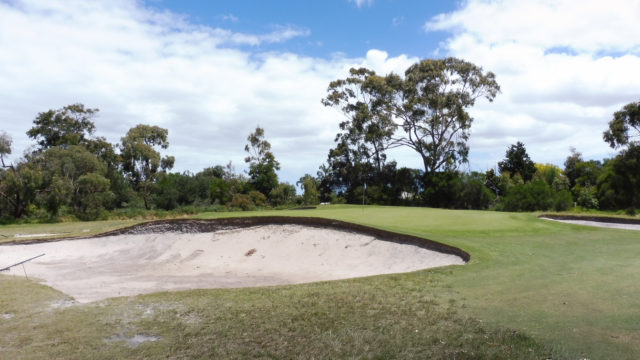
Bunkers surround the 14th green
An over abundance of sand is found an most sides of the putting surface, except the rear. The green is longer than it is wide, making accuracy a key to landing on the green. Not usually a big fan of a green being almost fully surrounded. This works on a short distance, but would make the hole a lot harder at its maximum length.
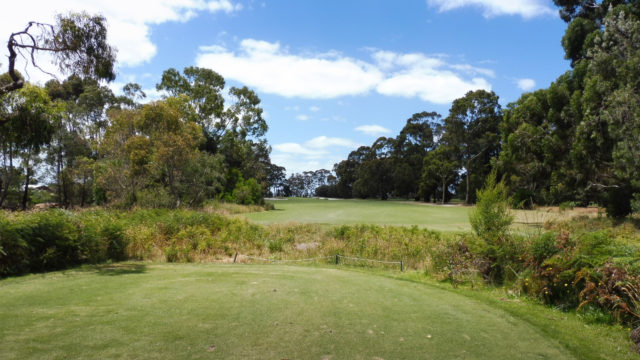
Hole 15 – 296 meter par 4
Coming to the shortest and easiest par 4, is a hole which can easily tempt the player with its short distance, but play havoc on the scorecard. Playing relatively straight, bunkers short of the green are reachable with the driver, so the big question is taking on the risk to leave a small pitch, or layup and find safety. This hole brings us back towards the clubhouse.
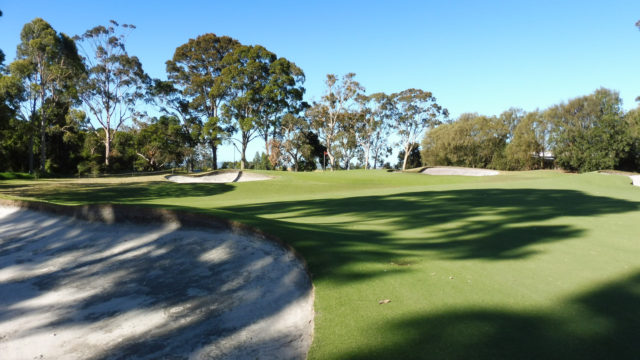
Bunkers short of the 15th green
Once reaching the bunkers, the fairway dramatically narrows, before the green is found. A hollow is found before finding the green with two further bunkers sit on the sides. The putting surface has gentle slopes, much like the rest of the greens at Cranbourne. A slight rise if found at the front of the green complex. Nice short hole which requires some thought from the tee.
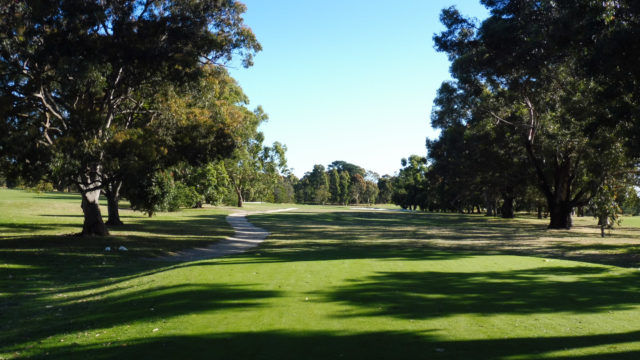
Hole 16 – 352 meter par 4
Heading away from the clubhouse in what basically forms a triangle for the final three holes, is this medium length par 4, which turns to the right. From the tee everything slopes away, but also slightly to the right. One bunker is found short of the turn on the inside, but will really be in play for shorter hitters. Another is found further down the fairway on the outside of the turn, but there is ample fairway to land the ball.
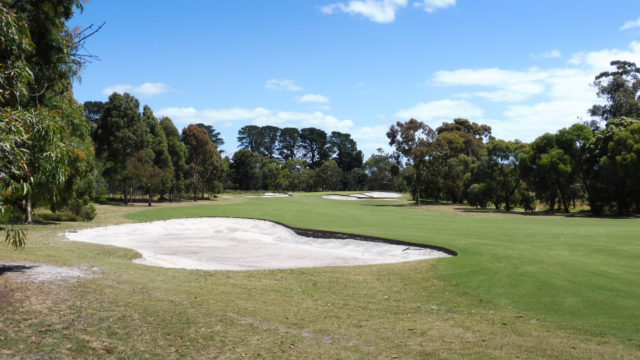
View from the 16th fairway
Ideally finding the left of the fairway leaves a cleaner line into the green for the approach, which angles away to the right. One trap is short right, whilst a further three are located beside the green, again on either side. This is the second hole which favours playing to the outside of the turn to maximise strategy. Something that is not very common, but does work in this situation. Even though most will try to shorten the hole, there is no real advantage with the green design. More trouble is located right without reward, other than a shorter shot which must be fairly accurate.
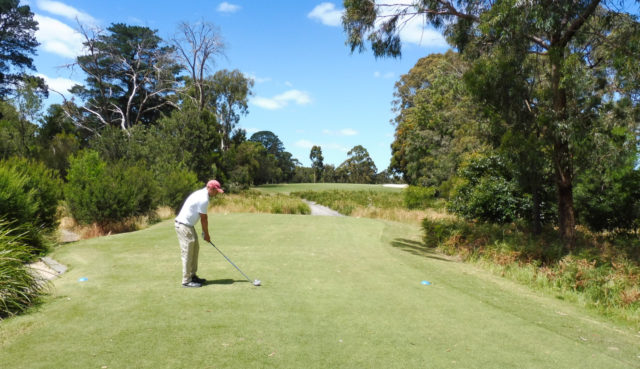
Hole 17 – 366 meter par 4
Similar in length and shape to the previous hole, some trouble is found before reaching the fairway. From the tee a rise must be reached, before any site of the green is possible. One trap is located on the inside at the top of the hill. The fairway is quite wide at this point but narrows sharply beyond the slope, so caution should be taken on how far you hit the tee shot.
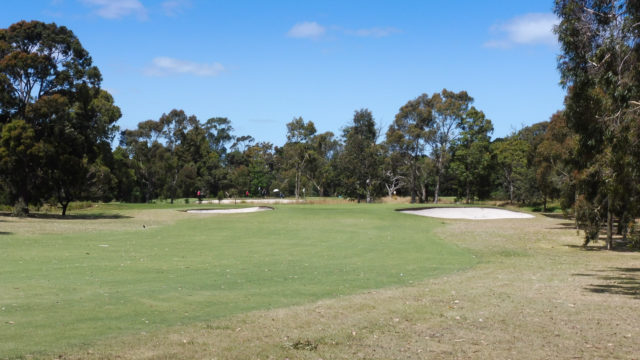
View from the 17th fairway
The second portion of the fairway is quite narrow, but a large primary cut of rough is found to compensate. A narrow entry into the green is found between two bunkers. This green has larger slopes leading away on most sides, sitting a little higher than most of complexes on the course. Certainly a shock first time playing, in particular the narrow fairway beyond the hill.
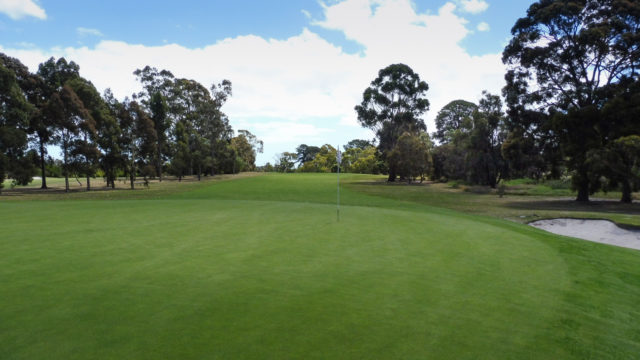
Looking back from the 17th green
From my amateur design point of view, would be good to see the green side bunkers reworked to add some variety. Maybe the green angling to the left with one bunker on that side. This then makes playing the tighter line down the right a reward if taking it on. Some of the trees on the left could be pushed back to widen the second section of the fairway for safety shots, but would still leave a difficult second.
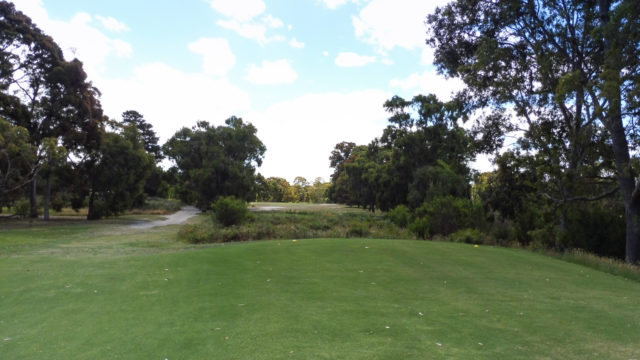
Hole 18 – 425 meter par 4
The last hole on the course is also the longest par 4 and hardest index on the course. If you are sick of consecutive holes turning right, don’t look. Here is another one. From the tee this hole looks very narrow with the trees either side. Thankfully they widen quickly beyond to a much larger fairway up until the turn, with the camber mostly to the right. There are no dangers other than hitting into the timber for the first shot.
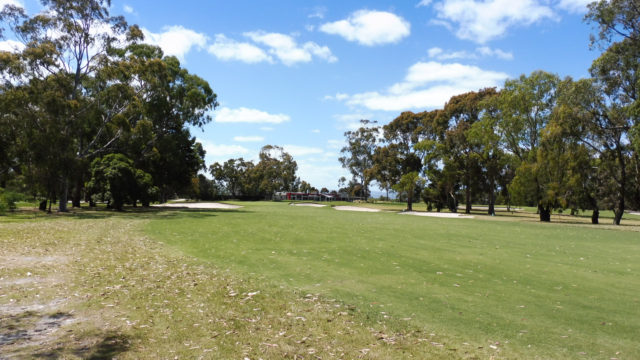
Looking from the 18th fairway
A shot down the centre of the fairway will leave the cleanest line into the green. Being too far right brings trees and a couple of fairway bunkers into play.
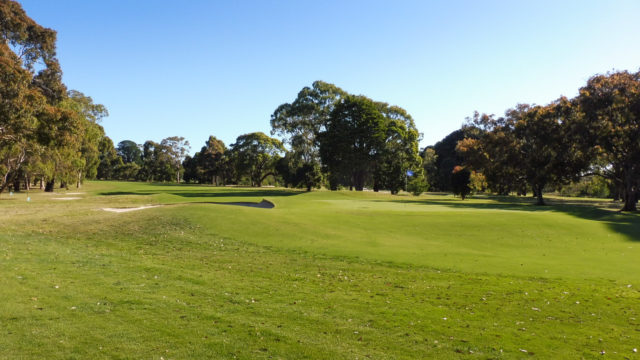
Last look back from the 18th green
A solitary bunker sits to the right of this long green, whilst some smaller slopes away from the green are found to the left and rear. Considering the length of the hole, the putting surface is not the longest on the course, which is interesting as a lot of players will be trying to roll the ball in.
Looking at the course makeup:
- Hole Directions – There was a good variety with direction allowing for conditions to have wide ranging effects during play. It was fairly evenly split among all directions on the compass. One hole, 3 has an easterly facing tee, which may have issues in the morning sun
- Hole Lengths – Par three holes had a good variance in distance, the majority in mid length. Par four holes ranged from short to long with a very even split, although all the mid length holes were found on the back nine, none on the front. Par 5 holes ranged from mid to long with the latter being the majority
- Hole Layout – There was a mixture in how the holes played, although an overwhelming majority tended to favour turns to the right, where two shots or more were required to reach the green. This outnumbered those turning to the left almost two to one. What made this worse were the last three holes on the course all playing with a right turn
In summary, this felt like two different courses. Front nine felt like a typical parkland style course, but was also fairly flat. Whilst the back was much more like a Melbourne Sandbelt course, but also had a lot more elevation change. For this reason the back nine was a lot more memorable, hence having the standout holes. Highlights were the 13, 15 and 16.

Overall the conditions were quite good throughout the course. This includes tees, fairway, bunkers and green complex. This is to be expected in the first month of summer.
My big test is whether I would return to play the course again. If the opportunity arose I certainly wouldn’t hesitate. This is a course of a high standard but could quite easily be so much more.
How to play at Cranbourne GC:
1. Be invited by a member
2. Be an interstate or overseas visitor who is a member of a golf club
3. Keep an eye out on the Events section of Golf Victoria website. Enter eligible competitions held at the course

